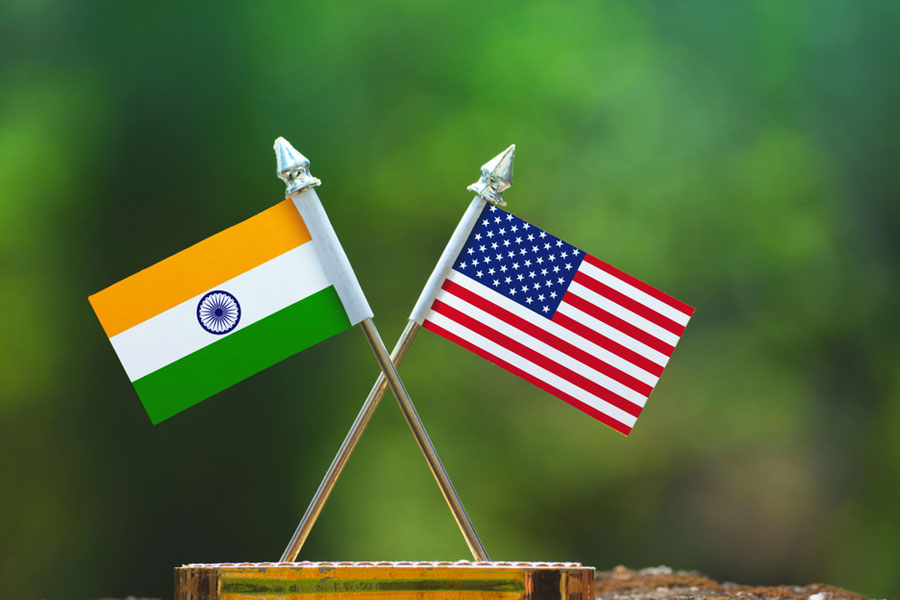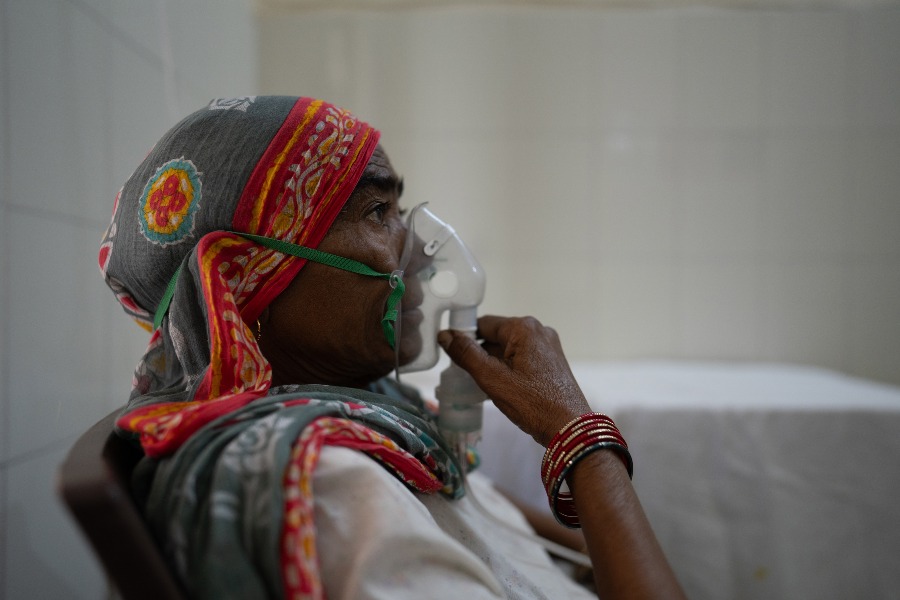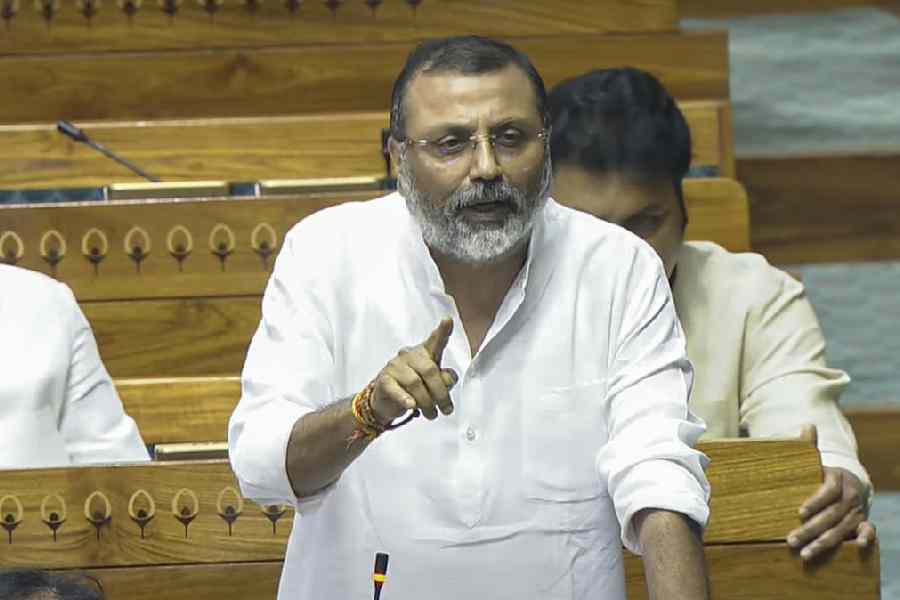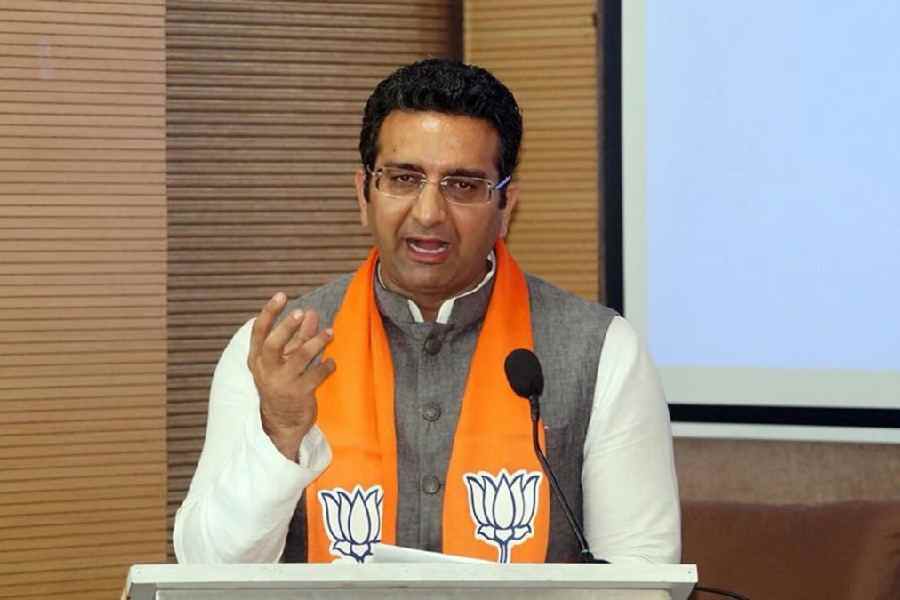 |
| Furious tussle: A painting by Bijon Chowdhury on display at Artists Circle |
If black be the thesis, must white not be its defining contrary? No contrast can be as stark or as startling and as fraught with tension as black and white. Colour dilutes the concentrated charge of B/W. Can you, for example, imagine Guernica in colour? Or Pather Panchali, for that matter? And now, as the eye is assaulted by colour from all sides ? photographs, films, the electronic and even the print media ? a kind of colour fatigue diminishes its impact. Monochrome, especially B/W, comes as a refreshing change. Even where black isn’t chillingly infernal, but merely a non-colour without connotations.
Recognising the immanent drama of black and white, Artists Circle, a young gallery on Circus Avenue, hosts till October 8 a show of paintings and drawings in black and white with grades of intervening greys in between. Titled ‘Through Another Lane’, it presents 19 artists.
And the first thing the viewer may notice is that the restriction brings forth a few arresting line works. Like the drawing of a woman’s head by Jogen Chowdhury, for example, with its flow of nervy lines. Another is a Jesus ? yet another ? from Wasim Kapoor which is noticeable for the power of its brevity. Not less so is Bijon Chowdhury’s brawny tangle of horses and men locked in a furious tussle. The animals leap and lurch, the men lunge forward even as one is thrown to the ground and is about to be trampled upon.
Anita Roychowdhury’s exuberant sketch with its breezy lines and wry romanticism is another example to cite. As is Prakash Karmakar’s Ganesh, a work of confident linear simplicity. Here the drama isn’t in action but in the re-invention of an oft-mined form. The hyperbole of proportions, the quaint gaucherie, the child-like execution cannot but amuse viewers.
And then there is Sunil Das with his traumatised beasts: a horse and a bull. That the suggestion of helpless power, of taut muscles and sudden, electric movements, of stricken vulnerability, can be evoked with such ease never fails to amaze viewers. Paritosh Sen’s sketch is typical but he replaces satire for a bit of sentimentalism, while Suhas Roy’s masterly skill is again wasted on an image that comes close to being cloying.
Both Partha Bhattacharya and Brotin Khan go for religious icons which are common themes in art and that generally takes care of the commerce, too. The former dwells on a new-age Krishna. Naturally enough. After all, if black is obligatory, it would quite naturally suggest the dark god. With subtle interludes of white to bring relief, the flute-playing youngster appears as a quite fetching image. The latter artist, on the other hand, shows a painstakingly-modelled Buddha radiating a benign serenity.
There is an incipient melancholy in Sekhar Roy’s paintings and an intriguing play of texture, the look of threadbare weave that carries with it suggestions of ageing and decay. But the temperament of Subroto Ghosh is more urban in the expressionist clutter of agitated lines, dark shadows and speeding black bands. Another work to note is the figure done by Aloke Bhattacharya in ink with its chiselled profile, long robe and mesh of squiggly cross-hatching.











